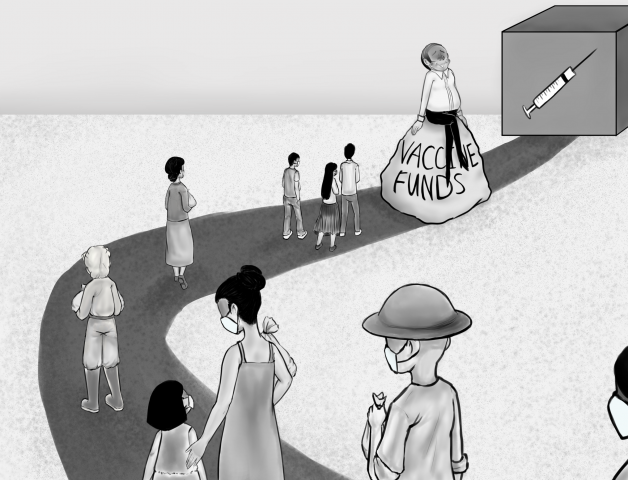
“What we’re seeing is by June 14, our supply will begin to normalize.” Sike.
Vaccine czar Carlito Galvez Jr.’s prediction seemed to have been too optimistic. It is the middle of July, and the country’s supply of COVID-19 jabs is hardly normal: shortages in a handful of local government units recently had to put their vaccination drives at a standstill. This setback is but a latent effect of government inaction months prior. From their complacency then, the ordinary Filipino is bound to suffer now.
The cities of Makati, Parañaque, and Cebu are only some of the several that suspended first-dose inoculation for some time due to stockpile problems. Back in March, Davao City also did the same after running out of vaccines, and so did Cebu City and the City of Manila in April.
The national government attributes the shortage to the slow arrival of supplies, which the President said in May were only being delivered in small-quantity shipments. Fair enough, there is some truth to this: despite how much the government has already procured and the agreements it has entered into, the vaccines are simply not coming in fast enough. And although supplies keep arriving, obviously not enough of them do. The country, then, is now merely at the mercy of the global supply chain, with few other options but to wait.
Still, this is no valid excuse. The country would not have been stuck in this limbo had the government ordered vaccines much sooner. And yes, we are going to again bring up the fact that late last year, Health Secretary Francisco Duque III mishandled negotiations for the early arrival of the Pfizer vaccine, which, for all we know, could have kicked off a more steady vaccination drive than the shortage-ridden one we have now.
Policy research from the World Bank shows that supply bottlenecks for the COVID-19 vaccine are largely the result of countries not procuring shots soon enough. Had the Philippines put in early pre-purchase agreements, it could have been at a more privileged position to receive the jabs. Instead, the nation finds itself in a waiting game, as manufacturers juggle a bulk of orders from multiple countries.
This leaves the Philippines with a less-than-hopeful outlook for its vaccination targets. The latest update from the Department of Health reports that only a little over 13 million Filipinos have been administered doses; of these, only 3.5 million are fully immunized or just 3.26 percent of the population.
The shortage had already prompted the government last May to reconsider its goal of 70 percent by year end, instead opting for just up to 60 percent of the population of the so-called “NCR Plus 8”. When it hopes to achieve that and when it actually can both remain unclear; more so for national outcomes.
But we refuse to believe that there is nothing the country can do but wait for more vaccines. It is perhaps time that a whole-of-society approach be considered for procurement. We have observed considerably successful efforts by the private sector to obtain jabs for students and employees and would very much like to see companies put profit aside and instead willfully contribute to this most urgent social cause. If these initiatives are coordinated along with those of the government and perhaps even of the civil sector, the Philippines’ shortage problem could at the very least be alleviated.
Filipinos may keep asking themselves what could have been had the government ordered doses much sooner. But for firms, organizations, and other such entities with the means and resources to help, it could be more important to ask what could be if all hands are on deck. We just hope the government thinks the same—for all our sakes.
